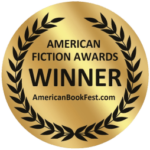More Thoughts on Writing (And a Book Mention)
What if? What then?
You’ve “finished” a writing project. The What if? process is over (for now). What then? Reward yourself with down time as you fantasize great success? Plow ahead? Brainstorm new projects? Dive into your well of long-simmering, incomplete thoughts and characters? Focus on your audience of agents, editors, critics, booksellers, librarians, teachers, and last but definitely not least, readers? Let’s explore the possibilities and approaches.
Questions:
• How “finished” is it? (The What then? depends on where in the process your project is.)
• First/Rough draft?
• Several revisions into the project?
• Critiqued?
• Feedback heeded, or at least considered?
• Voice checked and strengthened?
• Deadwood banished?
• Every word and phrase evaluated for fit and originality?
• Reached the point of diminishing returns?
• Researched and networked to find it a good home?
• Sent it on its way?
• So, it’s gone. What now?
• American Idol: guilty pleasure; American Idle: guilty displeasure. Take a day (one) off. You’ve earned it. You haven’t earned two.
• On that (one) day off, think about other ideas—ones you’ve been kicking around or shiny and pristine new ones—for your next project.
• The next day (sooner if you’re some kind of super-hero), write down those ideas. As more arrive, rejoice! Resume the What if? process for each. Which of them engage you? Excite you? Would excite a reader?
• Rank them by looking at such factors as interest to you, interest to publishers and readers, research and time requirements, compatibility with career goals and direction, genre, originality, place in the market, competitiveness in the market, duplication in existing books, and the ease or difficulty of coming up with an attention-grabbing, attention-retaining story with a beginning, middle, and end.
• Narrow down the possibilities and begin taking more extensive notes.
• Meanwhile, prepare a backup plan for if/when that manuscript you sent off gets rejected (it’s probable it will, regardless of how good it is). Be ready with a prioritized list of alternate agents or publishers. If/when the rejection comes, you need to be ready to send off the manuscript the next day (unless you’re having legitimate second thoughts or an agent or publisher has given you constructive feedback that convinces you to at least consider revising). But don’t just sit on it!
• Read books/stories/articles similar to the one you’re shopping or those you’re thinking about writing. Read them critically. Use an objective evaluation process to determine what you liked or didn’t like about a piece of writing (see the post “The Seven C’s of Evaluating a Story). What made it unforgettable? Forgettable?
• Go through your own manuscript(s) (the one making the rounds and any you’re working on), using the same objective criteria. Be ruthless. If/when your submission is rejected, think opportunity. Address or at least consider not only the comments or suggestions (if any) coming from the agent or editor, but also the questions raised by your own self-evaluation. Take the time—but not too much—to make adjustments—large or small—before the manuscript goes back out.
• Write a one- or two-page synopsis of the one new story idea you think has the strongest possibilities for you. The synopsis should be bare-bones—the principal characters and the story line—with a beginning, middle, and end. No details, no dialogue, unless you have some gems that you don’t want to forget.
• What do you think? Is the premise strong enough (potentially) for you to spend weeks or months (an article or story) or years (a book) developing and writing it?
• If so, go for it. If not, don’t give up on it. It may just need more time and growth.
• So, you’re happy with the manuscript you have circulating. You’ve chosen an idea for your next one. The synopsis you’ve written for it is full of potential. What happens then? My process:
• Scene outline—in order, a series of short (a sentence to a paragraph) scene descriptions. The main thrust of what happens in each scene. These scenes take me from the opening of the story to the conclusion. When I’m done, I have a map to get me where I’m going. But the route is flexible and subject to change. The details come later, and I can always add, subtract, reorder, or alter the scenes once I get to the next step.
• Rough draft—following the outline (mostly), write the lumpy, bumpy, bland thing. The shaping and smoothing and splicing and cutting comes later.
• The “later”—the revision process, the part that makes the difference between getting published and not. It can happen while you’re still writing that first draft, or on early reworks, or after critique group comments, or once a trusted reader or expert in the area you’re writing about has a look, or when new facts come to light during the ongoing research process, or when you’re out for a walk and a brilliant idea for a change or addition arrives. It will definitely happen once your editor gets involved.
• Finally? Self-evaluation is key all the way through the writing/revising process. During the planning/pre-writing, writing, and revising steps, use a tool like the seven-critique-points discussion and evaluation sheet to take an objective look at how you’re doing. If you feel too close to the work, ask a skilled, candid, and trusted friend or family member to evaluate and score your manuscript once you think it’s ready for that. The last thing you want to do is get all excited and let it go too early. Once you do, there’s no turning back, no second chance to make a first impression, at least with that agent or editor.
• Network! Smiles, handshakes, and hugs have the power to open doors.
And here’s the book mention: In a nod to the holiday (wake up! It’s almost Halloween!), I’m plugging my spooky collection of eleven stories called Uneasy Pickings. You (or the young reader in your life) might find a few chills and thrills, and yes, uneasy moments, in these tales. You’ll find it on Amazon for only $2.99 (Kindle), and $7.99 (paperback).
—David Patneaude
 Previous Post
Previous Post Next Post
Next Post




